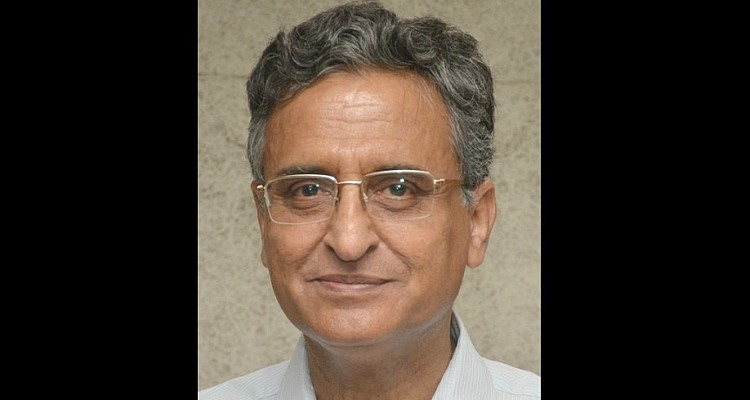By Dr Deepak Pental, Inventor of GM Mustard
(Read Food Sovereignty Activist, Dr Vandana Shiva’s response here)
A lot of falsehood is being spread about GM (genetically modified) crops by GM bashers. Currently, their attention is on mustard. They have zero regard for science and scientific method. They make wild statements for which they cannot be held accountable because they are neither public servants nor scientists. However, in this short piece, instead of tackling their motivated falsehoods, I will concentrate on informing readers on why India needs GM Mustard.
The GM technology developed in mustard will go a long way in helping agricultural scientists in India produce more and more productive hybrids with quality traits and disease resistance in the coming years, which will improve farmers’ incomes, as well as, benefit consumers. As all the work is public funded, the technology will reach the farmer at a very low cost. Using the developed technology, mustard production can be doubled in
10 years. Let me elaborate.
Global population in the year 1900 was around 1.6 bn. Today, it is around 7.3 bn. This tremendous increase in population has occurred due to major developments in the field of medicine— drugs, diagnostics, vaccines, instrumentation, new materials and of course, better management. All these developments have contributed to reduced child mortality and increase in longevity. All human beings experience health issues, and as a consequence, we tend to appreciate developments in the field of medicine.
However, do we ever give a thought to how food production has been increased to cope with this large population? Genetic and plant breeding has made major contributions to increase food production. We fail to realise that just like human beings, crop plants have a gamut of health issues—crops are attacked by a number of pests and pathogens and solutions have to be continuously found to save them both from biotic and abiotic stresses.
Therefore, R&D is relevant to agriculture as to any other field. Productivity of almost all crops grown in India is low and while we are self sufficient in cereal crops, we have HUGE DEFICITS in oil seed and legume crops. Water resources are stressed and soil health is deteriorating due to lack of crop rotation and conservation agriculture. Also, India imports approx `70,000-crore (approx USD 10.8 bn) worth of edible oils every year. This expenditure is a DRAIN ON OUR FOREIGN EXCHANGE reserves but more worryingly, shows our inability to produce enough even though 48% of the Indian population is involved in agriculture for its livelihood.
This number includes the vast number of farmers cultivating mustard. What we need is low-input, high-output agriculture. The situation can only be redeemed by employing the best of technologies available to breed crops for yield increase and yield stability under low-input conditions. To put it bluntly— Science and Technology is required even more in agriculture than in any other area.
One well established method of increasing yield of a crop is development of hybrid varieties. Mustard flowers have both male and female parts and tend to self pollinate. In order to make hybrids, we need a pollination control mechanism. One line has to be made male sterile and the other must contain a restorer function so that hybrids are completely fertile. Both at DU (Delhi University) and in IARI (Indian Agricultural Research Institute), extensive efforts were made to develop a pollination control mechanism through conventional breeding methodologies. Unfortunately, it did not work.
However, the GM method works very well. So if we want to develop more productive mustard in India, we need to use the GM method, which uses Barnase/Barstar genes (derived from a soil bacterium, Bacillus amyloliquefaciens) for hybrid seed production.
Our earlier breeding work had shown that Indian varieties crossed with east European varieties provide hybrids that yield 20-30% more than the best Indian varieties. Therefore, all the components required to increase mustard yields (currently stagnating at around 1.2 tonne per ha) to higher levels through hybrids in the coming years are in place.
Safety-wise, globally, the Barnase/Barstar system has been used to develop hybrids in rapeseed, a sister crop of mustard, in Canada, United States and Australia. Since 1996, millions of tonnes of ‘Canola’ oil and meal have been exported from Canada and consumed all over the world, including in India, with no ill effects.
Contrary to the GM bashers’ shrill refrain that GMOs are ‘Frankenfoods’, GM Mustard is PERFECTLY SAFE. In spite of the large number of international biosafety studies, all tests to assure biosafety of GM Mustard have been done in India in leading public institutions.
These SAFETY-RELATED TESTS include:
- Analysis of Toxicity
- Analysis of Allergenicity
- Analysis of Nutritional Equivalence
- Expression Analysis
- Analysis of Effect on Soil Micro Flora
- Analysis of Insect Pollinators
Following one-and-a-half years’ deliberations, the GEAC* (Genetic Engineering Appraisal Committee) has recommended environmental release of GM Mustard for commercial use.
Both yield increase and yield stability are not simple matters. It has taken us about 30 years of painstaking research work to develop this hybrid. Future work will bring in quality hybrids, disease resistance and even higher yield.
One can only hope that the final decision on environmental release of GM Mustard by Government of India will be taken on the merit of scientific evidence and in the interest of Indian agriculture, and NOT under pressure from GM bashers who have a very shallow knowledge of developments in science and scant regard for scientific methods.
________________________________________
*GEAC: The GEAC is India’s biotech regulator



Leave a Reply